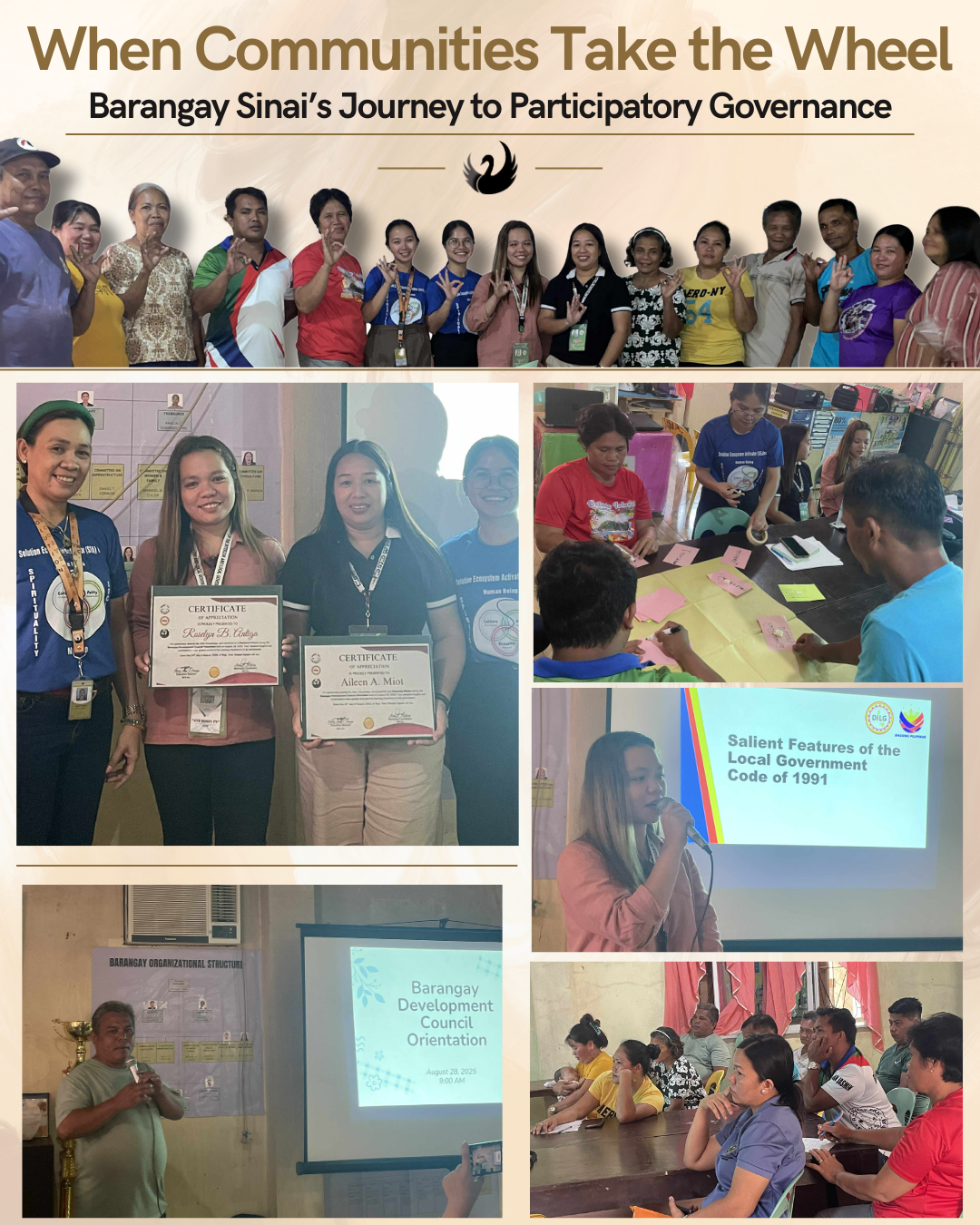On August 28, 2025, Barangay Sinai’s covered hall wasn’t just another meeting place. It became a classroom, a council, and—most importantly—a reminder that good governance is not just the work of a few, but the heartbeat of the entire community.
The day began with a prayer led by Kagawad Jonathan Jasmin, setting the tone for a hopeful and purposeful gathering. Then came Barangay Captain Joselito G. Gam, who welcomed participants with words that resonated with both pride and challenge:
“Your presence shows your commitment to the progress and well-being of our community. Let us use this opportunity to share ideas, strengthen partnerships, and build a clear vision for a better and more resilient barangay.”
It wasn’t just lip service—his words were an open invitation to everyone present: we’re all in this together.
Why Participation Matters
First on the floor was Mrs. Aileen A. Miot, CSO desk officer and administrative officer, who wasted no time getting to the heart of participatory governance. She stressed that governance is more than elected leaders signing documents—it’s about people having a voice, and that voice being heard.
She dropped a line that stuck with many:
“Our rights end when you end the rights of others.”
For the participants, it wasn’t just a quote—it was a call to balance. True governance, she explained, is collective. When citizens step up to be part of decision-making, programs become not only more effective but also more trusted. As one participant whispered to a seatmate, “So, hindi lang pala Kapitan ang bida dito—lahat pala tayo.” (It’s not just the Captain who leads here—it’s all of us.)
A Crash Course in Power and Responsibility
Next came Ms. Roselyn Antiga, the representative from DILG, who unpacked the Local Government Code of 1991 like a teacher breaking down a textbook into real-life lessons. She reminded everyone that local autonomy is not just a buzzword. Barangays have the power to craft ordinances, manage resources, and implement programs that speak directly to people’s needs.
But there’s a catch—it only works if people get involved. “NGOs, POs, even private groups have a seat at the table,” she said, pointing to mechanisms like the Barangay Development Council and the School and Health Boards. These aren’t just paper committees; they’re bridges where the government and people meet.
One senior citizen in the crowd leaned on his cane and muttered with a smile, “Kung dati parang nanonood lang kami, ngayon pwede na rin kaming maki-eksena.” (Before, we were just spectators. Now we can join the scene.)
Beyond Compliance—A Tool for Growth
By the end of the orientation, the 22 participants—slightly shy of the 30 expected, but no less engaged—saw the BDC in a new light. It’s not a bureaucratic requirement. It’s a living, breathing tool for growth, inclusivity, and empowerment.
They talked about transparency, accountability, and the need to prioritize urgent projects with proper monitoring and evaluation. And they realized something bigger: the future of Sinai isn’t just in the hands of its officials, but in every resident who chooses to be part of the process.
Or as one mother said on the way out, toddler in tow: “Kung may boses ka, gamitin mo. Sayang kung itatago lang.” (If you have a voice, use it. It’s a waste if you keep it to yourself.)
Barangay Sinai’s orientation may have ended before lunch, but its message lingers: real development isn’t handed down from above. It’s built, hand in hand, by the people who call the community home.





Leave a Reply